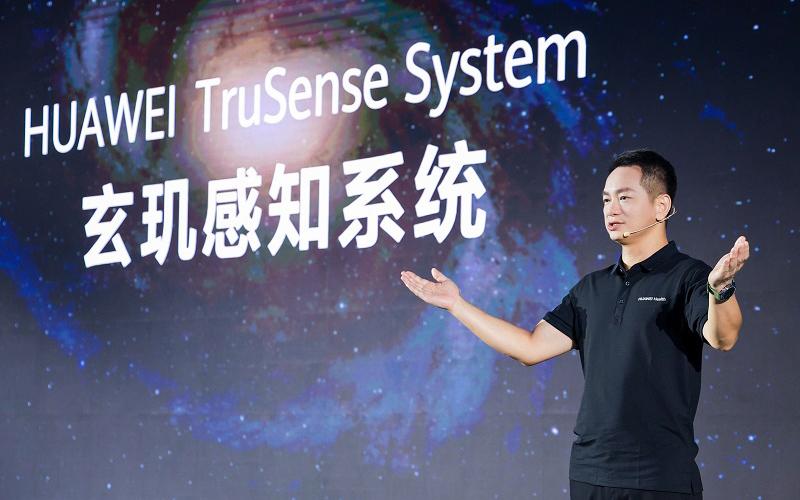
 0 Comment(s)
0 Comment(s) Print
Print E-mail China.org.cn, August 30, 2024
E-mail China.org.cn, August 30, 2024

Rico Zhang, president of Huawei's Smart Wearable and Health Product Line, unveils the Huawei TruSense System at a launch event in Dongguan, Guangdong province, China, Aug. 28, 2024. [Photo courtesy of Huawei]
Chinese tech giant Huawei unveiled its new TruSense System on Wednesday, designed to provide its smartwatches and fitness trackers with unprecedented accuracy and the capability to monitor more types of health data.
The new system can track over 60 health and fitness indicators, from basic metrics like heart rate and blood pressure to complex assessments such as cardiovascular risk, stress levels and even emotional well-being.
Huawei also demonstrated TruSense's remarkable speed. When built into a smartwatch, the system can complete a comprehensive health assessment in just 60 seconds. During this quick scan — which includes users coughing into the watch — the system checks for various health risks like lung infections and sleep apnea.
"TruSense will keep us at the forefront of technological development in this space," said Rico Zhang, president of Huawei's Smart Wearable and Health Product Line.
Since entering the wearables market in 2013, Huawei has shipped over 150 million devices and topped global smartwatch shipments in the first quarter of 2024, according to market research firm IDC.
Global wearables shipments rose 8.8% in the first quarter, but analysts say a lack of innovation has allowed budget manufacturers to gain considerable market share from established players.
Huawei is countering this trend with significant R&D investment in TruSense, equipping it with advanced health tracking tools aimed at both consumers and health care professionals.
TruSense has secured European Union and Chinese certification for several health indicators, positioning Huawei's new wearables among the most accurate on the market. This addresses a critical industry issue, as researchers note most wearables inaccurately measure key metrics like heart rate and calorie burn, which has hindered their integration into professional health care.
"Less than 4% of wearable devices have been formally validated," said professor Luis Sardinha, dean of the faculty of Human Kinetics at the University of Lisbon, at the launch event. "[Validation] is really very important for end-users and manufacturers."
Huawei has invested heavily in sensor technology and material improvements to enhance reliability. The company has also partnered with over 150 organizations on research into areas ranging from remote health care to family health management.
Health experts at the launch event expressed enthusiasm about TruSense's potential for preventive care, citing its ability to provide medical-grade data to both consumers and doctors over time.
Professor Wang Jiguang, president of the Chinese Hypertension League, highlighted this potential, saying, "With the TruSense System, we can properly manage hypertension in the future three to five years."
The system's long-term, accurate monitoring could enable earlier detection of health issues and improve chronic condition management, experts said.
"Wearables are comfortable to wear, portable and easy to use. They make health care research easier and are accurate," said Xu Xin, a professor at Zhejiang University School of Medicine.
Huawei's Zhang emphasized the growing importance of wearables in health management. "You can wear them 24/7 and monitor any changes. This is what health professionals want — real-world data outside clinical settings," he said.
The launch aligns with China's nationwide Healthy China Initiative, which aims to promote healthier lifestyles and improve disease prevention by 2030. Wearable health technology like TruSense could contribute to these goals by enabling widespread, consistent health monitoring.
Huawei plans to unveil its next generation of wearable devices, powered by TruSense, next month.